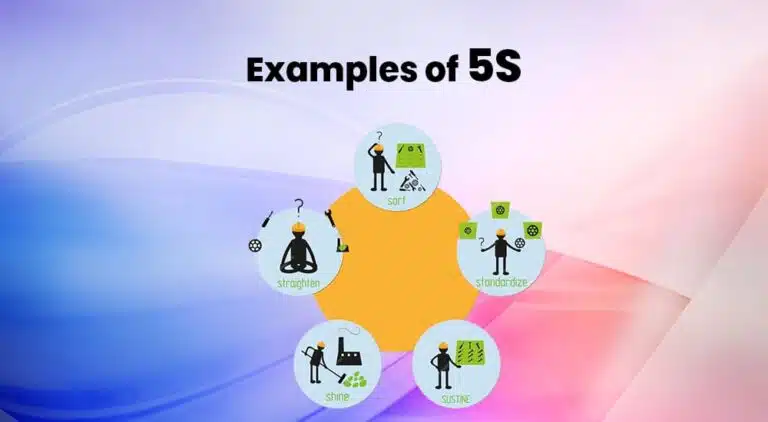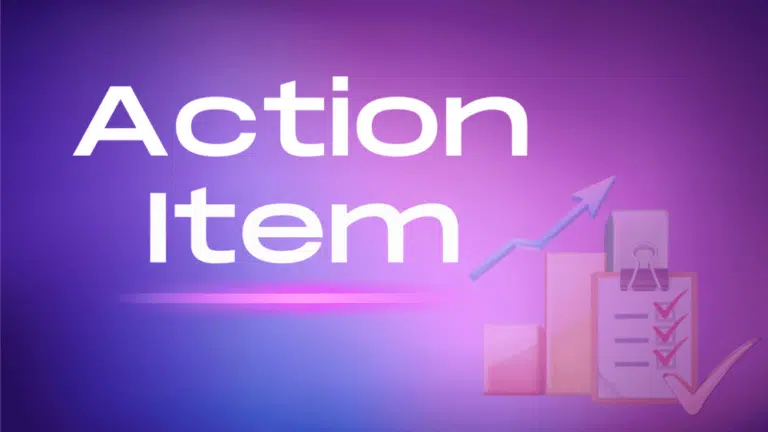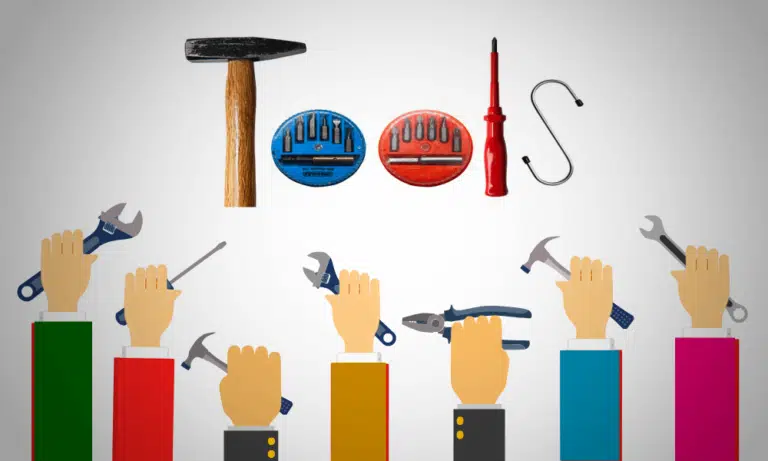Collaboration and teamwork are key to business success. If the organization is large and involves many departments and business units, cross-functional collaboration is vital for smooth functioning and achieving the highest efficiency.
Sound inter-functional collaboration and teamwork can transform an organization from scattered parts to a cohesive and strong brand.
In today’s blog post, we will discuss cross-functional collaboration and teamwork – its benefits, challenges, and methods to improve it within an organization.
What is a Cross-Functional Collaboration?
A cross-functional collaboration is a process where the team or unit uses resources or accepts help from other teams or departments within the organization to achieve their objectives and long-term business goals. The team or unit can take expert employees, consumables, or equipment from other parts of the organization and use them for their project or task.
A cross-functional collaboration also involves multiple teams working together to achieve common goals.
An effective cross-functional collaboration increases the organization’s efficiency, reduces silos, and motivates employees to perform better. It promotes teamwork and improves the working environment in the organization as the employees know each other well and communicate and collaborate better.
Top management support and direction are needed to make cross-functional collaboration happen; otherwise, it won’t work.
I have worked with many large organizations and have experienced that every department works in isolation. They are concerned about their KPI or department performance and won’t cooperate with other departments or business units.
Sometimes, they consider the other departments as outsiders or competitors.
So, to make this feature work, top management must encourage their employees to collaborate with other teams and different departments to improve the work culture and achieve the organizational goals together.
Benefits of Cross-Functional Collaboration
Cross-functional collaboration benefits an organization by helping innovation and improving performance.
The following are key benefits of cross-functional teamwork:
#1. Bring Team Members with Diverse Skills to Work Together
A large organization has resources with diverse skill sets. Many are experts and highly qualified, but your project team or department may not get them full-time. This is because they are loaded with assignments, do not want to change jobs, or their manager is more influential than you.
However, if your team or unit needs their services for some time, you can collaborate with other departments to access their expertise for your benefit.
Likewise, the other project teams or departments can use your resources to help solve their issues or improve performance.
If your organization gets a bigger project, they must work with multiple teams to complete it.
Currently, most project management software allows collaborative cross-functional teamwork using cloud-based software or apps.
#2. Streamline Work and Improves Processes
Using cross-functional teamwork, your team or unit gets diverse skills and learns best practices and processes to do the work efficiently. It helps streamline the work and improves your existing processes.
However, guest resources can sometimes disturb the existing efficient process; therefore, you need to monitor the changes and accept them only if they bring positive results.
#3. Create a Positive and Motivating Workplace Environment
I have worked with large organizations and experienced it myself. Employees from the other team will never talk to me, and I, too, rarely speak with them even though we are together in one building.
However, when I moved to other teams or went there for temporary cross-team collaboration, I interacted with them and became friends.
Therefore, if there is a cross-functional collaboration among different teams, the members and employees will get to know each other and work together to achieve overall success.
This cross-team collaboration creates a positive and motivating work environment for employees to work efficiently.
#4. Improve Teamwork and Employee Engagement
When team members cross-collaborate with different teams, they get to know each other, become acquaintances, and support each other to complete the tasks. This improves both bonding and teamwork.
It helps motivate cross-functional employee engagement at all organizational levels.
Example of a Cross-Functional Team Collaboration
Cross-functional collaboration is vital to developing a new mobile app. Consider a scenario where a company works on this project, and various teams with distinct expertise must collaborate seamlessly.
The product management team defines the app’s vision, goals, and features. They communicate market needs and user expectations to guide the development process.
Next, the design team focuses on creating the app’s user interface and experience. Their collaboration with product managers ensures design alignment with the overall product vision and a positive user experience.
The development team takes charge of writing the code and building app functionalities. They collaborate closely with product management and design teams, ensuring features align with user needs and technical feasibility.
Quality assurance (QA) professionals test the app for bugs, usability, and overall quality. Their collaboration with the development team is vital to identifying and resolving issues and maintaining high-quality standards.
The marketing team comes into play by developing a strategy for a successful app launch. They collaborate with product management to understand key features, work with design for promotional materials, and coordinate with development to align marketing efforts with the release schedule.
The customer support team addresses user inquiries, feedback, and issues post-launch. Their collaboration with product management and development teams ensures a clear understanding of common user issues and provides insights for future updates.
These cross-functional teams hold regular meetings throughout the development process, share progress, and address challenges collaboratively. This ensures that diverse and different perspectives are considered, leading to a more comprehensive and successful product launch.
What are the Key Challenges in Implementing Cross-Functional Collaboration and Teamwork?
Cross-functional collaborations and teamwork are not organic and do not occur in a vacuum.
According to this report, 75% of cross-functional teams are dysfunctional. Therefore, it needs strong direction, guidance, and support from top management and department managers’ changing mindsets to succeed.
The following are key challenges in applying cross-functional team collaboration:
#1. Mistrust Among Employees
A team goes through different stages of team formation known as the Tuckman Ladder model (forming, storming, norming, and storming). When a new member joins the team for a short duration or different teams come together, they want to perform well without going through the previous three stages of formation.
So, in a nutshell, they do not bond well, which can create conflicts and mistrust.
To build trust, you can use team-building activities, icebreakers for small teams, or trivia questions to lighten the environment. All help build a cohesive team.
#2. Misunderstanding and a Lack of Communication
In cross-functional collaboration, misunderstandings and improper communication are common, as new team members can feel unwelcome or unhappy with leaving the previous assignment.
Suppose this is the case with your cross-functional team. You can use team-building activities, breakers, etc. You can also pair them with other team members to work and create a bond.
#3. Inefficient Hybrid or Virtual Cross-Collaboration
In virtual and hybrid work environments, cross-collaboration is not easy as team members rarely or never meet, so making a bond is difficult.
Here, you have limited icebreakers because of the nature of the team, so you can use a virtual icebreaker for remote teams, such as a virtual scavenger hunt, and help your virtual or hybrid team create a bond and work collaboratively.
Also, cloud-based collaborative project management tools can help create a robust team.
#4. Conflicting Objectives
Many times, when two different teams collaborate, they may have conflict because of different conceptions or objectives. For example, one team’s objective is to deliver the deliverable on time, and the other team insists on some more tests to ensure high product quality, and they don’t care about the milestones.
To solve this issue, you must align the objectives of all stakeholders at the beginning of the collaboration so everyone on the task has a common goal.
#5. Resistance to Change
A cross-functional collaboration introduces new methods, techniques, and processes to work more efficiently.
For some team members, this looks like an exciting opportunity to learn, but for a few, this change can be scary, and learning a new process is another task. And if these members are forced to adopt new processes or techniques, they won’t perform well.
To solve this issue, educate the team members on the benefits of the change and show them it can help them achieve their objectives with fewer hurdles.
Seven Tips to Improve Cross-Functional Collaboration
1. Clear Communication Channels: Establish transparent communication pathways to ensure information flows seamlessly between all teams/departments/units. Use project management software, collaborative platforms, and regular meetings to share updates, expectations, lessons learned, and feedback.
Encourage regular communication through various channels, both formal (meetings) and informal (instant messaging, social platforms). Pay attention to others’ contributions, ask questions, and acknowledge concerns. To maintain trust and alignment, keep everyone informed about progress, issues, roadblocks, and decisions.
2. Define Roles and Responsibilities: Clearly outline the roles and responsibilities of each team or function involved in a project. This reduces ambiguity, prevents duplication of efforts, and allows team members to understand how their contributions fit the objectives.
Align common goals and expectations by setting clear objectives. Ensure everyone understands the project objectives and how their tasks contribute to the bigger picture. Establish success metrics by agreeing on measuring and tracking progress and promoting transparency and accountability.
3. Build a Collaborative Culture: Promote an environment that encourages collaboration by recognizing and rewarding cross-functional teamwork. Create shared goals and celebrate achievements collectively to reinforce the importance of collaboration as a core value within the organization.
4. Cross-Functional Training: Invest in training programs that give team members a basic understanding of other functions. This not only promotes empathy but also equips individuals with the knowledge needed to collaborate effectively, breaking down silos and facilitating smoother communication.
Share knowledge and expertise by encouraging team members to share their skills and knowledge through presentations, workshops, or mentorship programs.
5. Establish Feedback Loops: Implement regular feedback mechanisms to assess the effectiveness of cross-functional collaboration. Encourage open dialogue about challenges and successes. Use this feedback to improve processes and strengthen collaboration strategies continuously.
6. Use the Right Tools and Techniques: You must use the right tools and techniques to ensure that cross-functional collaboration and teamwork work smoothly. Choose tools that facilitate task management, document sharing, and real-time updates.
If your team is remote or hybrid, you can use video conferencing and file-sharing tools to ensure everyone is updated and can communicate effortlessly. You can follow a robust document version control system to ensure everyone can access the right document for discussion and development.
Use a robust cloud-based project management software to ensure live collaboration and task management. Explore collaborative brainstorming tools and consider mind-mapping software or online whiteboards to encourage creative problem-solving and idea generation.
7. Build Trust: Organize team-building activities and invest in events or exercises that help team members get to know each other outside of work. Encourage a respectful workplace environment by establishing ground rules for respectful interactions and emphasizing open dialogue and constructive feedback.
Finally, celebrate successes together and recognize and appreciate individual and team achievements to build morale and strengthen the sense of shared purpose.
Summary
Cross-functional collaboration is an ongoing process requiring commitment and effort from everyone, including top management. If done well, you can create a more cohesive and productive team environment that thrives on collaboration and shared success.

I am Mohammad Fahad Usmani, B.E. PMP, PMI-RMP. I have been blogging on project management topics since 2011. To date, thousands of professionals have passed the PMP exam using my resources.







